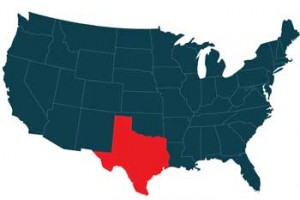Texas Emergency Vehicle Light State Statutes

Law enforcement officers, firefighters and rescue workers need as clear as possible paths to promptly respond to incidents that pose threats to the health or safety of others. Numerous other types of vehicles are used for the repair, maintenance, and construction of roads and utility lines; and for protection of offices, stores and other privately-owned facilities.
Texas emergency vehicle light laws determine which vehicles can and must have particular types of warning devices. With these laws, particular types of public service and other workers can warn others of their approach or activities. Restrictions on who can use them protect the public from criminals posing as law enforcement, rescue or security workers.
Section 547.305 of the Texas Transportation Code lists the types of vehicles that can have emergency or warning lights. These vehicles include “authorized emergency vehicles” as defined by Texas Transportation Code Section 541.201, tow trucks and vehicles used in construction and maintenance of roads and utilities. On September 1, 2018, vehicles employed in private security may also have flashing lights.
Police Lights
The vehicles of police departments, sheriff’s office, the Texas Highway Patrol, public and private colleges and universities with police officers, and the Texas Department of Public Safety may use red, white and blue combination lights, including light bars. (Texas Transportation Code Section 547.305(c).).
Texas Transportation Code Section 541.201(13-A) treats the privately-owned vehicles of police officers, sheriffs and their deputies, campus police officers, Texas Rangers, constables and a host of other “peace officers” as defined by Texas Code of Criminal Procedure Section 2.12 as “police vehicles.” These “peace officers” include, but are not limited to:
- Investigators who work in the offices of prosecutors or county attorneys
- Texas ABC law enforcement officers
- Police officers or security personnel at certain airports
- Investigators of agencies and boards, such as the Texas Medical Board, Texas Insurance Commission, and Texas Racing Commission
- Officers, patrol persons and security personnel at parks run by local governments
The agencies that employ these and other “peace officers” defined by Texas Code of Criminal Procedure Section 2.12 may have emergency police lights on their cars.
However, privately-owned vehicles of “peace officers” must abide by toll road rules including paying the tolls, unless the vehicles are marked as vehicles used by law enforcement. (Texas Transportation Code Section 541.201(13-A).)
Fire Truck Lights
Texas Transportation Section Code 541.201(1)(A) places the vehicles of fire departments within the definition of “authorized emergency vehicles.” This statute allows Texas fire trucks and ambulances to use red lights. Like, police these first responder vehicles should have two red lights on the front of their rigs and two red lights on the rear of the vehicles.
Volunteer Firefighter Lights
Under Texas Transportation Code Section 547.702(d), the private cars or trucks of volunteer firefighters have two options for displaying emergency lights:
- Two front and two rear red lights which flash in an alternate fashion. The front and back lights must be mounted level with each other and be visible for up to 500 feet away.
- A temporarily-mounted red light on the roof of the vehicle. In normal daylight, vehicles or others as far as 500 feet away must be able to see the lights.
To activate the lights from a private vehicle, the volunteer firefighter must be responding to a fire or other medical emergency. Such incidents may include crashes, other incidents resulting in injuries, or a person suffering a heart attack, stroke or otherwise falling ill and in need of emergency care.
Ambulance and Emergency Vehicle Lights
By virtue of Texas Transportation Code Section 541.201(1)(B), ambulances used by governmental agencies or private ambulance companies can display and purchase emergency vehicle lights.
“Emergency medical services vehicles” also have authority under Texas Transportation Code Section 541.201(1)(C) to have emergency lights. Within this category lie vehicles that provide basic or advanced life-support, serve as mobile intensive care units, or other “specialized” emergency vehicles. (Texas Health and Safety Code Section 773(12).) Other medically-oriented vehicles that qualify as authorized emergency vehicles under Texas Transportation Code Section 541.201(1) include:
- Industrial ambulances or industrial emergency vehicles
- Vehicles that deliver, on an emergency basis, blood, organs, medicines or drugs, for blood or tissue banks.
Tow Truck Lights
Under Texas Transportation Code Section 547.305(d)(4), tow trucks may display alternating flashing lights if they tow disabled vehicles along a highway or other roadway or if directed by a highway patrol trooper, police officer, Texas Ranger, sheriff’s deputy or other law enforcement officer to remove a vehicle involved in a crash.
According to Texas Transportation Code Section 547.305(d)(5), tow trucks with mounted bars are allowed if they further comply with the requirements for stop lamps and turn signals.
 Construction and Road Maintenance Vehicle Lights
Construction and Road Maintenance Vehicle Lights
The requirements of amber lighting on construction and road maintenance vehicles illustrate the purposes of allowing motorists and others to differentiate these class of vehicles from emergency ones. The latter, with their red, white and blue lights, warn approaching people of medical, criminal or other emergencies. With amber lights, vehicles in the former category tell others of work being performed to improve or keep roads safe.
Section 547.001(2-b) of the Texas Transportation Code encompasses vehicles that remove snow from roads, strip road lines, sweep and spray roads, and test them for the capacity to cause skidding. Vehicles that excavate, grade, and roll streets and highways to apply asphalt and construct roads come under the umbrella of “highway maintenance vehicles.”
Construction and road maintenance vehicles situated on the roads, but not in work zones, should have blue on the driver’s side and amber on the passenger side.
Utility Vehicle Lights
Vehicles that construct or work on public utilities such as electricity, water and natural gas, are deemed service vehicles under Texas Transportation Code Section 547.001(6-a). These vehicles must conform to the same standards for lighting as other Highway or traffic maintenance vehicles.
Escort Vehicle Lights
Section 623.099 of the Texas Transportation Code regulates the lights for escort flag vehicles. These cars or trucks accompanied manufactured homes with a width greater than 16 feet, up to 18 feet. This section requires escort vehicles only for manufactured homes of this width.
Under Section 623.099(c)(1), escort vehicles must have either two flashing amber lights or one beacon amber light of at least eight inches in diameter. The lights must have visibility from all sides and be mounted on top of the vehicles.
Private Security Vehicle Lights
Section 547.305 of the Texas Transportation Code creates, effective on September 1, 2018, a new class of vehicles that may display lights. This group consists of security patrol vehicles, defined as vehicles used for security services provided by a guard company or security officer. (Texas Transportation Code Section 547.305(f).) security patrol vehicles may have only green, amber or white lights.
“Guard companies” are licensed under Chapter 1702 of the Texas Occupations Code. Section 1702.108 defines these entities as those providing private guards, patrol persons or those serving as “watchmen.” Their functions include the prevention of trespass, fire, larceny, unauthorized entries, and personal protection of individuals. Employees of guard companies may perform limited traffic control only to the extent to protect entry to and from the property being guarded.
To be deemed a security officer means to offer security for a company’s security department or as part of the company providing security services. Such persons must hold responsibilities as a guard, watchman count patrolman, guard of armored cars or careers or respond to alarm systems that signal the unauthorized entry of people.
Texas permits a number of law enforcement, rescue, utility and road workers to have vehicles with warning lights. These lights warn others of the need to stay clear so that the workers who use or are with them can perform their duties effectively and safely.
For more information about what lights may be available to you, we suggest calling your State Highway Patrol office at: 512-506-2847
*Please note that these numbers are what we are currently able to find and the numbers may have changed since this listing.
Disclaimer: The emergency vehicle light state statute guide was created by Extreme Tactical Dynamics as a guide and reference. We make no claim to the accuracy or validity of this guide. This guide was written to the best of our knowledge and has been provided to our customers as a courtesy ONLY! The information in this guide is our interpretation of the law as we have read it. We cannot be held responsible for any errors as this is only our interpretation of the law and the laws are constantly changing. We cannot be held liable or responsible for any errors and recommend that our customers refer to their local authorities to confirm the particular statue that governs their use of emergency vehicle lights.
 Facebook
Twitter
Google+
Instagram
YouTube
Facebook
Twitter
Google+
Instagram
YouTube


